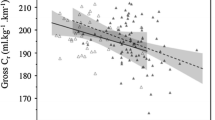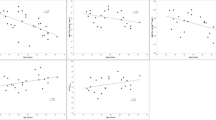Summary
Running economy, defined as the steady-state V̇O2 for a given running velocity, has been shown to account for a large and significant proportion of variation in distance-running performance among runners roughly comparable in V̇O2 max. Despite this recognition, relatively little is known regarding the potpourri of physiological, environmental, structural and mechanical factors potentially associated with a lower aerobic demand of running.
Early attempts at quantifying the energy expenditure of exhaustive runs incorporated measurements of oxygen consumption before, during, and after exercise. The validity of this approach has been questioned, however, since recent evidence has demonstrated that only a moderate relationship exists between postexercise V̇O2 and anaerobic metabolism. The energy demands for submaximal running (i.e. running economy) can be quantified by calculating the steady-state V̇O2, expressed with respect to body mass and time, for a standardised, submaximal running speed. Since this variable represents the aerobic demand of running, the generation of energy must derive wholly from cell respiration and not from substantial protein catabolism. Research has indicated that at low to moderate work rates, the steady-state energy condition is attained in about 3 minutes. Trained individuals reach steady-state sooner that unfit subjects. While limited by methodological constraints, the existence of a steady-state has also been verified by the lack of blood lactate accumulation and the presence of a respiratory exchange ratio of less than 1.00.
The ability of economy, either singly or in combination with V̇O2 max, to account for a substantial portion of performance variation among trained distance runners and untrained subjects of comparable ability and fitness level has been demonstrated in recent cross-sectional studies. Limited data from short and long term longitudinal research also suggests that endurance running success is linked to training and growth-related improvements in economy.
Intraindividual variation in economy has been shown to vary between 2% and 11% for a given speed. Most of this variation can probably be attributed to biological error. While the majority of evidence does not support a gender difference in running economy, data from some studies suggest that males may be more economical than women. Prepubescent children are less economical than older children and adults, whereas older adults exhibit the same trend when compared to younger counterparts. Because of air and wind resistance, the aerobic demands of indoor treadmill running significantly underestimate the cost of overground running, especially at higher speeds. As body temperature rises during exercise, V̇O2 increases as a result of the ‘Q10 effect.’ While conflicting data exist with respect to the effect of fatigue on the aerobic demand of running, recent work incorporating physiological and biomechanical measures demonstrated that a 30-minute maximal run produced little or no change in the metabolic and biomechanical profiles of trained runners. No consensus exists regarding the effects of different types and intensities of training on running economy. Substantial variation in economy among long distance runners who compete in the same event suggests non-training factors may also influence economy.
A number of anthropometric and biomechanical factors have been considered for their ability to account for some of the interindividual variability in running economy commonly observed. Despite assumptions to the contrary, it seems appropriate to conclude that when the confounding influence of speed is negated, few biomechanical variables have been shown consistently to account for a substantial portion of variation in economy. It has been suggested that at present it is not possible to distinguish whether mechanical variables describing the running pattern of an uneconomical runner contribute to making the runner uneconomical, or whether the pattern reflects the means by which the individual has optimised his or her own anatomical and physiological features.
Similar content being viewed by others
Author information
Authors and Affiliations
Rights and permissions
About this article
Cite this article
Morgan, D.W., Martin, P.E. & Krahenbuhl, G.S. Factors Affecting Running Economy. Sports Medicine 7, 310–330 (1989). https://doi.org/10.2165/00007256-198907050-00003
Published:
Issue Date:
DOI: https://doi.org/10.2165/00007256-198907050-00003




